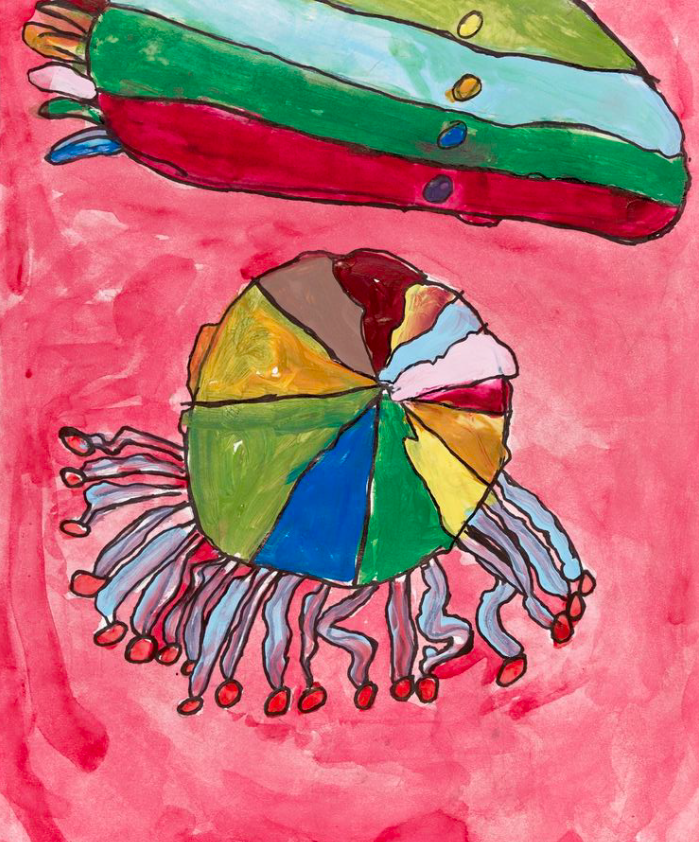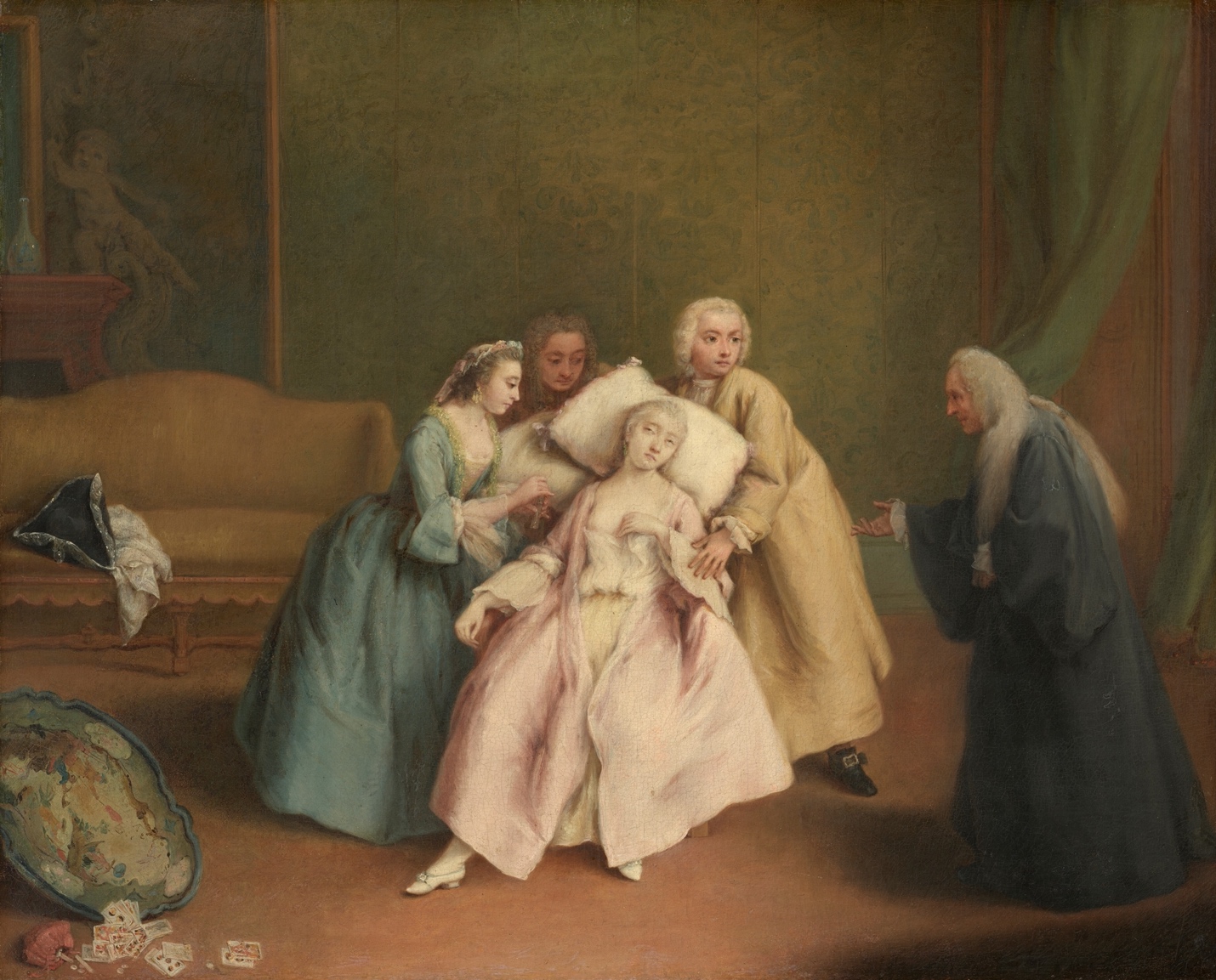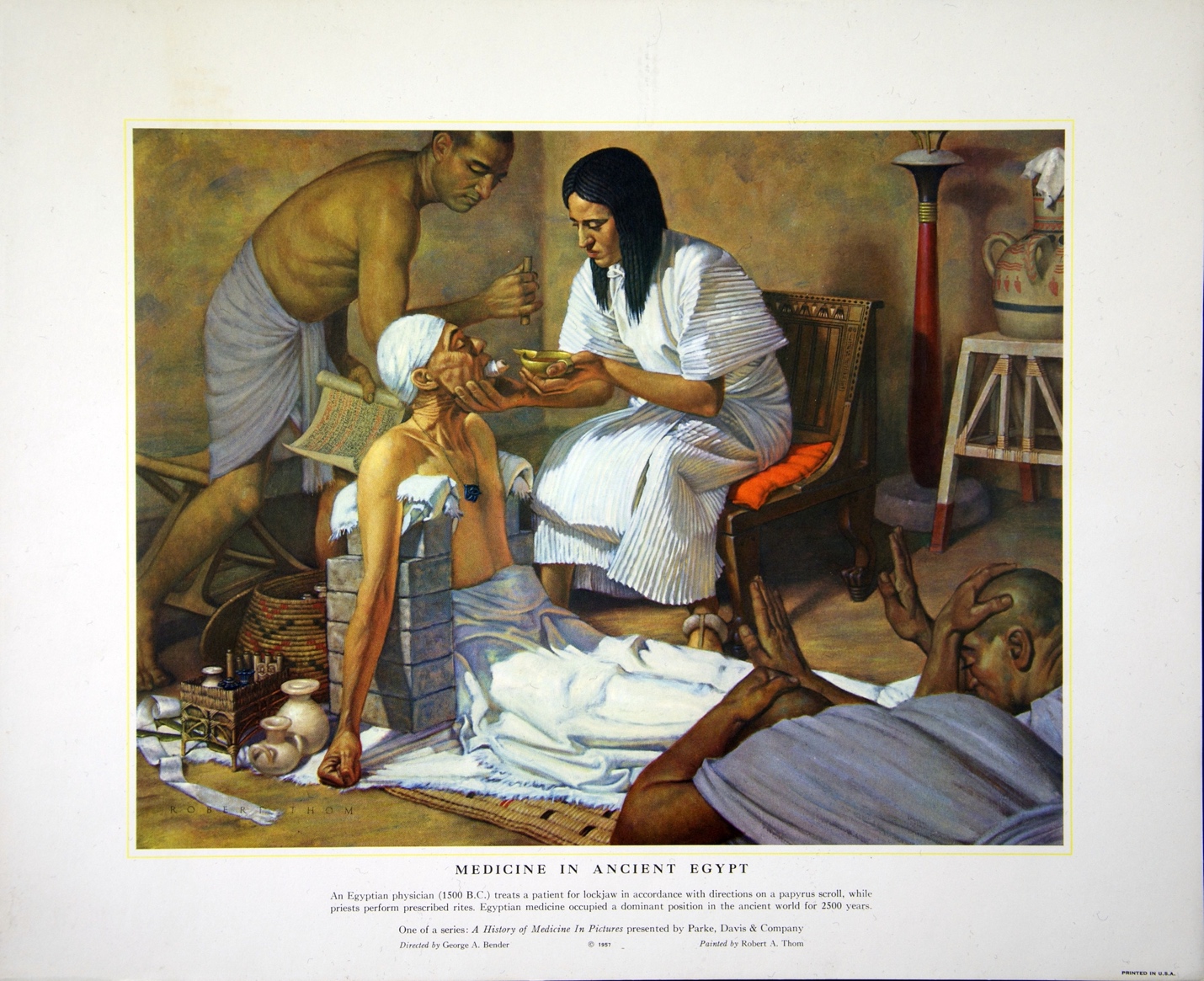Artistic Statement
This research is dedicated to a dimorphic fungus called Histoplasma capsulatum. It is found in endemic areas worldwide, notably in river valleys (Akram & Koirala, 2023). The Ohio and Mississippi River basins and the southern states are the common areas in the United States (Akram & Koirala, 2023). It is a fungus that lives in soil, and once it is disturbed, the conidia migrate into the air and can be ingested (Akram & Koirala, 2023). This fungus is essential because, although the infections are frequently inactive, a granulomatous inflammation causes a lung condition comparable to pulmonary tuberculosis (Akram & Koirala, 2023).
Histoplasmosis can spread among immunocompromised people and cause significant morbidity and death (Akram & Koirala, 2023). In my research, I delved into the various manifestations of this disease, its symptoms, and its impact on human health. The art pieces used to illustrate my point range from simple images to photographs and paintings that help grasp the significance of the fungus. Together, these pieces tell a story about the environmental origins of Histoplasmosis and its historical significance in medical mycology.

The painting that can be seen above is called Benny the Bacteria. It was created by a teacher, Ms. Degenhardt, and was demonstrated by a charitable organization, Fresh Artists. The artist’s mission is to spread awareness about bacteria and help children and adults differentiate between excellent and harmful bacteria (Fresh Artists, n.d.).
Pathogen
Histoplasmosis is caused by a fungus known as Histoplasma capsulatum, which lives in the soil. Although severe infection is more likely in the context of cellular immunity being weakened, absorption of the fungus by humans can be outwardly hidden, or it can result in life-threatening chronic illness (Mittal et al., 2019). H. capsulatum is a dimorphic fungus that remains in mycelial form at ambient temperature but grows as yeast at body temperature (Mittal et al., 2019). Its yeast cells are well suited to the mammalian host because they can successfully live inside specific phagocytic cells’ intracellular habitats (Mittal et al., 2019). Thus, the yeast form of the fungus is the pathogen that causes Histoplasmosis, further leading to infection of the lungs and other organs.
Historical Accounts
The discussed infection was only discovered in the 20th century. Histoplasma was discovered in 1905 by Samuel T. Darling, but it was not fully understood till the 1930s (Dantas et al., 2021). It was only hinted to cause widespread infection during this period, with limited investigations into the condition (Dantas et al., 2021). Many patients with this disease during that period were misdiagnosed with tuberculosis.
Histoplasmosis accounted for 5% of all fungal infections during this period, but the first case was conclusively reported in the 1940s (Dantas et al., 2021). The proportion of patients conclusively diagnosed with this condition increased only after the 1980s (Dantas et al., 2021). Cases of histoplasmosis mainly increased with meningitis, especially in immunocompromised patients who had AIDS, with more than 44% of AIDS patients having histoplasmosis (Dantas et al., 2021). Other immunocompromised patients on corticosteroids, those on chemotherapy, additionally contracted the disease.
Disease Transmission
Regarding disease transmission, it is noteworthy that there are several ways in which a human can be exposed to the fungus. Histoplasma capsulatum can generally be located in parts of North and South America, Africa, and Asia (Venes, 2021). Histoplasma fungus mainly inhabits the soil in many parts of the world and can be found in bird or bat droppings (Venes, 2021). Moreover, it is noteworthy that even construction work, demolition, and excavation can release spores into the air and increase the risk of exposure (Venes, 2021).
The transmission of this fungus occurs when human beings inhale it from the sources above (CDC, 2021). Microscopic specks of the fungus may float in the air around the sources where it is found, and when people inhale that air, they become infected with the fungus (CDC, 2021). Notably, most people inhaling this fungus do not develop the disease, with only a tiny proportion becoming sick (Fayyaz, 2020). The transmission of Histoplasma between human beings through any form of direct contact does not occur.


The sculpture above is created by Paul Sumner in 2001 and depicts birds sitting on a branch. The sculpture reflects one of the risk factors for Histoplasma transmissions, which is a high prevalence of birds in one location, whose droppings can be infected.
Risk Factors for Infection
People in the areas where the Histoplasma fungus is known to inhabit can contract the disease. The people who disturb the soil where the fungus inhabits can contract the disease if that soil contains bat or bird droppings (CDC, 2019b). People who disturb such soil include those who dig or chop wood, clean or tear down old buildings, explore caves, and clean chicken coops (Azar et al., 2020). People at risk of developing the disease include people who have HIV/AIDS, those who have undergone an organ transplant, and those on corticosteroid therapy (McKinsey, 2021). Overall, there are many risk factors to which people can be exposed.
Symptoms
Symptoms of histoplasmosis are mostly restricted to the respiratory system, as the lungs are the most affected system. Other systems, such as the musculoskeletal system, are additionally affected, with most symptoms being generalized (CDC, 2021). In general, Histoplasmosis’ mildest types don’t manifest any symptoms (Mayo Clinic, 2022). The following signs and symptoms may manifest within 3 to 17 days following contact: Fever, Chills, Headache, Body Aches, Cough, Abdominal Pain, and Fatigue (Mayo Clinic, 2022).
Several histoplasmosis sufferers additionally experience joint discomfort and a rash (Mayo Clinic, 2022). Those with lung conditions like emphysema are susceptible to chronic histoplasmosis (Mayo Clinic, 2022). A decrease in weight and a bloody cough are two indicators of chronic histoplasmosis (Mayo Clinic, 2022). The signs of chronic histoplasmosis might occasionally resemble those of tuberculosis (Mayo Clinic, 2022). Thus, it is necessary to seek professional help when symptoms persist.

The painting that can be seen above is an 18th-century masterpiece by Pietro Longhi. One can see how only centuries ago, the field of medicine was limited in knowledge, and most diseases and symptomatology were treated with rest. Meanwhile, nowadays, infections, such as Histoplasmosis are treated with specific treatments, reducing manifestations of debilitating symptoms.
Treatment Options
Histoplasmosis is a treatable condition, and antifungal medications show reliability in combating the condition. A potent treatment option for this disease is amphotericin, a polyene (Todar, 2020). It treats the condition by inactivating the Histoplasma membrane containing sterols. This derails the activity of this pathogen and promotes healing. An additional drug used for the treatment of histoplasmosis is the Itraconazole regimen for a period ranging between 3 months to one year (CDC, 2019a). For most patients, however, there is no need for medication as the disease resolves spontaneously. Treatment is reserved for people who are immunocompromised and who are likely to suffer dire symptoms from the disease.

The 20th-century painting on the left is the one created by Robert Thom (Thom, 1957). It reminds us of how medicine has transformed from the application of herbs to specific drugs that target infections.
Infection Prevention
Considering the possible outcomes of the infection, it is crucial to reduce the risks of exposure and prevent the disease. Histoplasmosis infections can be prevented by carefully handling the sources of the infection. This entails ensuring proper gear is worn by people cleaning areas with large bird droppings. Proper caution should be taken when demolishing or renovating old buildings by acquiring the proper protective gear (CDC, 2019a). Additionally, there is a need to exercise caution when exploring caves, as birds mostly live there. This entails wearing proper gear that ensures the explorers do not inhale those droppings.
Prevalence of the Disease
Considering how the infection spreads, the prevalence of the disease is high. In the United States, 60% to 90% of people who live in the areas surrounding the Ohio and Mississippi River valleys have been exposed to the fungus at some point during their lifetime (CDC, 2020). The fungus dominantly resides in the soil in the regions above (CDC, 2020). There is an incidence of 3.4 per 100,000 population of adults aged 65 and older in the United States (CDC, 2020). Worldwide, the condition is common in people who have HIV/AIDS or who are immunocompromised for other reasons (CDC, 2020). Thus, Histoplasmosis is quite prevalent, with people living in areas with favorable fungal conditions being especially exposed.
Current Events that Involve the Disease
There are usually very few active outbreaks of this disease because it is predominant in immunocompromised people, hence little reporting. According to HealthMap (2023), this disease has no alerts. This means that there are no infections at a grand scale in any part of the world sufficient to warrant international attention. Recently, the World Health Organization (WHO) launched the TRACK initiative for patients with HIV/AIDS to monitor opportunistic infections that affect them (WHO, 2023). This initiative is geared towards ensuring efficient collection and sharing of data for infections such as tuberculosis and histoplasmosis that are common amongst HIV patients.
Images Associated with the Disease
When I close my eyes and think about Histoplasmosis, the image that comes to my mind is that of a very stubborn condition that hampers respiratory capacity. I see a patient struggling to breathe, one experiencing chest pain. Additionally, the patient I picture has poor health due to other conditions they suffer from. The image additionally shows a patient living in poor conditions and unable to afford ART for HIV/AIDS, which is the reason they suffer from this infection.

For example, the painting that successfully captures such predicaments is the one by Théodore Géricault, who painted a woman addicted to gambling. Although the woman struggles with mental health issues, the exhaustion on her face could be used to demonstrate the tiredness of the individuals stricken with Histoplasmosis.
References
Akram, S. M., & Koirala, J. (2023). Histoplasmosis. National Library of Medicine. Web.
Azar, M. M., Loyd, J. L., Relich, R. F., Wheat, L. J., & Hage, C. A. (2020). Current concepts in the epidemiology, diagnosis, and management of histoplasmosis syndromes. Seminars in Respiratory and Critical Care Medicine, 41(1), 13–30. Web.
CDC. (2020). Histoplasmosis statistics. Web.
CDC. (2019a). Treatment for Histoplasmosis. Web.
CDC. (2019b). People at risk for Histoplasmosis. Web.
CDC. (2021). Protect yourself from Histoplasmosis. Centers for Disease Control and Prevention. Web.
Chappia, H. (2021). IIT Hyderabad develops oral amphotericin B to treat black fungus. The Times of India. Web.
Dantas, K. C., Mauad, T., de André, C. D. S., Bierrenbach, A. L., & Saldiva, P. H. N. (2021). A single-centre, retrospective study of the incidence of invasive fungal infections during 85 years of autopsy service in Brazil. Scientific Reports, 11(1), 1-10. Web.
Fayyaz, J. (2020). Histoplasmosis: Background, pathophysiology, etiology. Medscape. Web.
Fresh Artists. (n.d.). Benny the Bacteria: Using art to dispel fear. Web.
HealthMap. (2023). Contagious disease surveillance. Web.
NO MO. (n.d.). Samuel T Darling – Pioneer and malariologist. Web.
Mayo Clinic. (2022). Histoplasmosis. Web.
McKinsey, D. S. (2021). Treatment and prevention of Histoplasmosis in adults living with HIV. Journal of Fungi, 7(6), 1-12. Web.
Mruthyunjayappa, S., & Leal, S. M. (2021). Histoplasma capsulatum. Pathology Outlines. Web.
Todar, K. (2020). Antimicrobial agents in the treatment of infectious disease. Textbook of Bacteriology. Web.
Venes, D. (2021). Taber’s cyclopedic medical dictionary. F.A. Davis.
WHO. (2023). WHO launches the TRACK initiative for capacity building and knowledge sharing on advanced HIV disease. World Health Organization. Web.